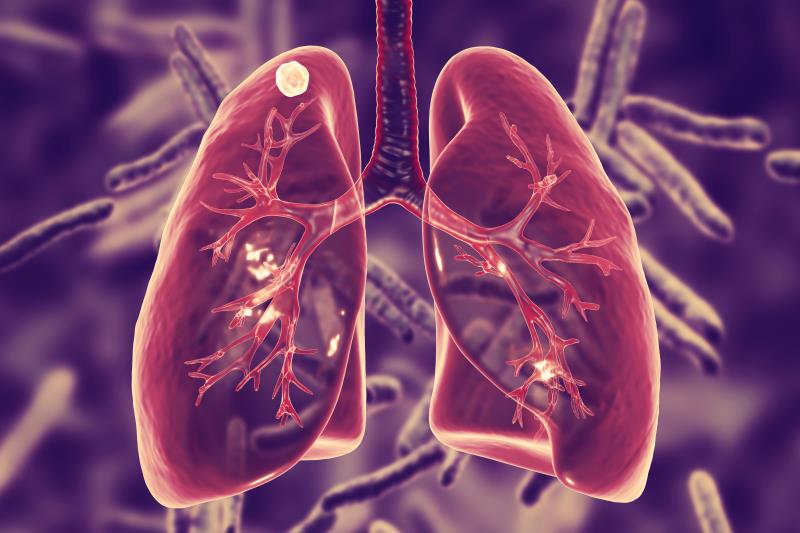
Four months of daily rifampicin is safer than 9 months of daily isoniazid when it comes to treating latent tuberculosis (TB) infection, according to a post hoc safety analysis on pooled data from two randomized studies* — thus rendering the ambitious goal by the WHO to treat 30 million patients by 2022 possible.
“Safety has been the Achilles heel of latent TB infection treatment. The risk of adverse events [AEs], particularly hepatotoxicity, with most current first-line TB drugs, are orders of magnitude higher than other drugs routinely used in primary care,” the researchers pointed out.
“Convincing a person who does not have active TB to take tablets daily that might make them feel unwell or even seriously ill is challenging,” wrote Drs Simon Tiberi and Giovanni Battista Migliori of Queen Mary University of London, London, UK and Istituti Clinici Scientifici Maugeri IRCCS, Tradate, Italy, respectively in a linked commentary. “Toxicity is less forgiving in fit and well individuals and is likely to impact adherence.” [Lancet inf Dis 2019;doi:10.1016/S1473-3099(19)30627-9]
The incidence of grade 1–2 rash or grade 3–5 AEs — the analysis’s primary outcome — with the four-month rifampicin regimen was about half of that seen with nine-month isoniazid (1.5 percent vs 2.7 percent). The risk difference between groups was -1.2 percent (95 percent confidence interval [CI], -1.9 to -0.5), which translates to a number needed to harm of 67 for rifampicin and 37 for isoniazid. [Lancet inf Dis 2019;doi:10.1016/S1473-3099(19)30575-4]
With isoniazid, grade 3–4 hepatotoxicity was the most common AE — with three-quarters of the cases occurring within 4 months of starting treatment. Older age (≥35 years) emerged as a predictor for the primary safety outcome, and in particular, for grade 3–4 hepatotoxicity (adjusted odds ratios [ORs], 2.3 [95 confidence interval (CI), 1.3–4.2] for age 35–64 years and 5.3 [95 percent Ci, 1.9–13.3] for age 65–90 years, compared with age 18–34 years).
In addition, having pretreatment ALT** levels above the upper limit of normal was also associated with an increased risk of developing grade 3–4 hepatotoxicity in isoniazid-treated patients (OR, 2.6, 95 percent CI, 1.2–5.0).
“Safety, particularly hepatotoxicity, has been a major concern with isoniazid treatment for people aged 65 years and older,” said the researchers. “This concern is even more prominent as it appears inevitable that patients aged 65 years or older will need to be treated for latent TB infection to eliminate TB.”
Unlike isoniazid, the primary safety outcome in patients receiving rifampicin did not appear to be age-related. Moreover, grade 1–4 rash was the most common AE, instead of hepatotoxicity. Of note, no hepatotoxicity was observed in the 130 patients aged ≥65 years taking rifampicin.
On the other hand, inconsistent medication adherence (OR, 2.0, 95 percent CI, 1.1–3.6) and concomitant medication use (OR, 2.8, 95 percent CI, 1.5–5.2) were associated with a higher risk for all AEs among rifampicin-treated patients.
“On the basis of safety considerations alone, rifampicin should become a primary treatment option for latent TB infection,” concluded the researchers, stating that it is “probably the safest latent TB infection treatment option” for patients without a contraindication.
“For prescribing physicians, it is important to stress the importance of consistent medication adherence to patients and to be wary of potential interactions with concomitant medications,” they urged.
Making a difference
The shorter rifampicin regimen could make a difference to patient care, according to Tiberi and Migliori. “A 4-month regimen allows managing two patients instead of one on isoniazid for 9 months.”
“As use of this regimen expands, we believe careful surveillance is warranted to confirm that the findings from these randomised trials are consistent even under pragmatic conditions,” suggested the researchers.